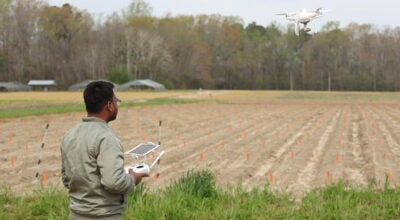Hunting decline affects refuge
Published 10:23 pm Wednesday, September 13, 2017
Declining interest in hunting around the nation has resulted in an abundance of opportunities for those who still participate in the pastime to join what once was a coveted chance to hunt in a local wildlife refuge.
The Great Dismal Swamp National Wildlife Refuge has experienced a marked decrease in the number of hunters seeking to participate in its annual deer and bear hunts, officials said this month.
Hunt registration began July 1, and the refuge normally receives 350 to 400 applications, but only 70 permits had been issued as of Sept. 7, according to refuge manager Chris Lowie.
Furthermore, he said, only 29 of 100 available bear hunt permits had been issued.
“The bear hunting is what typically motivates people,” Lowie said.
The refuge allows only deer and bear hunting. Its deer hunt season is divided into an early season and a late season. The deer season — using shotguns or bows — begins with scouting Sept. 30, with hunting allowed Oct. 6, 7, 13, 14, 20 and 21 and on Nov. 3, 4, 10, 11, 17 and 18.
The bear season — using shotguns firing slugs only — begins with scouting on Nov. 2, with hunting allowed on Nov. 3, 4, 10, 11, 17 and 18.
Special refuge hunting permits are required for both seasons.
Tim Doxey, media chair for the Suffolk-Nansemond Chapter of the Izaak Walton League of America, said that several hunters in his chapter have curtailed their refuge hunting because of wetter conditions in the refuge in recent years.
But, he added, changing demographics have contributed to less hunting nationwide.
“If you weren’t raised hunting or fishing, it’s very hard to be exposed to it,” Doxey said. “A lot of people grew up with it, but that’s not the case any more.”
The Suffolk experience echoes a decline in hunting that was detailed in a five-year report published by the U.S. Fish and Wildlife Service. According to the report, hunting participation dropped by about two million participants between 2011 and 2016. Total hunting expenditures also declined over that same time span from $36.3 to $25.6 billion.
“No one does more for our wildlife and or wild places than hunters,” David Allen, Rocky Mountain Elk Foundation president and chief executive officer, stated in a Sept. 7 press release by the U.S. Department of the Interior.
“Any decline in hunting numbers, real or perceived, is of great concern, since hunting provides the lion’s share of funding for nationwide conservation work, thanks to excise taxes on firearms, ammunition and archery equipment that garner more than $1.6 billion annually.”
Sustainable populations for deer and bears in the Great Dismal Swamp prevent malnutrition and disease, Lowie said, and population growth is kept in check through consistent annual harvests.
“It’s a biological management tool and it’s a benefit to the refuge,” Lowie said. “It gets folks outdoors and gives them an appreciation for environmental stewardship.”
The U.S. Fish and Wildlife report showed that 101.6 million Americans, or 40 percent of the population 16 years old and older, participated in wildlife-related activities in 2016. This included fishing, which saw an 8-percent increase from 2011 to 2016, and wildlife watching, which increased by 20 percent.
Organizations like the Izaak Walton League are encouraging the next generation of Americans to participate in such outdoor activities. In April, the Suffolk-Nansemond Chapter held a teddy bear hunt for more than 30 kids and their parents.
The annual event is just one of the chapter’s efforts to help youth recognize the benefits of outdoor conservation efforts.
“Conservationists and hunters go hand-in-hand,” Doxey said. “As hunters, we see the value in those animals and the need to conserve them, and that’s one of the reasons we are trying to expand our youth programs.”
Contact the refuge office at 986-3705 for more information on hunting registration.






